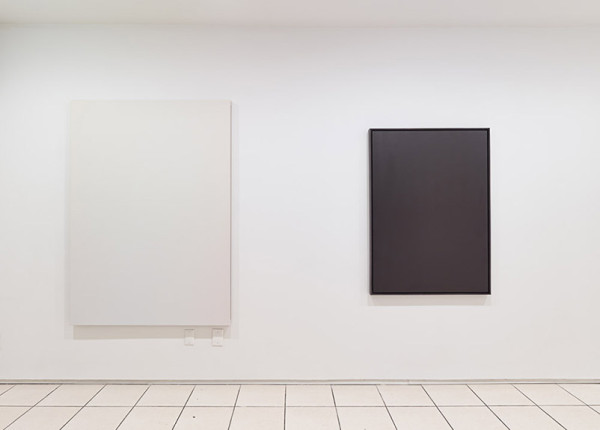Scott Lyall
Thursday, 30 January 2014
Work from Indiscretion at Miguel Abreu Gallery.
“Lyall’s paintings, which are in fact digital prints on stretched canvas, are mounted on monochrome backings that frame them, double them, and space them in relation to their environments. As color field images – or the lack of such images – the paintings are generated using an iteratively mechanical strategy that resolves a triple demand for negation, schema, and repetition. The viewer is confronted with a continuous and joyfully predictable pictorial surface of totally rendered difference. Lyall begins a work by selecting a single pixel, an invisible quantified ‘color’ within a digital color model. From this initial decision and definition of primary color emerges a self-generating, potentially infinite sequence of transformations: the color is wound around the virtual curvature of a void. This vertiginously repeatable formula results in iridescent and impersonal visual atmospheres, where no two points are quantitatively equal, but where the magnitude of their relationships remains constantly equivalent. At face value, the paintings appear like sheer almost-monochromes made from digital dust, while being predicated exactly in the opposite reality of the polychrome. By contrast, the glass works, although made by an identical print technique, commit the layers of ink to the opacity of a glaze – the absorptive, 80% black sheet backing. These differential treatments of identical file material, which immerse the expressive artist in the technical support or apparatus, imagine a common interface of remarkably lucid lack.
‘The first paintings that cannot be misunderstood’, wrote Ad Reinhardt about his late work. But as it turned out, Reinhardt’s insistence on negation, schematization, and repetition has never ceased to augur misunderstandings. Like his predecessor, Lyall accepts and even proposes that his work be conventionally recognized as abstract painting, that is that it exists as a signifying and signified part of a specific culture at a particular historical moment – ours. However, his infinitesimal and quasi-random choices of generative color pixels might point to a limit reached in the digital age. It is as if Lyall’s paintings depict a lack in their environments, a pure particle that, to echo the famous words of Mallarmé, is missing from every volume, every empty sample of air. At the same time, his monochrome backings – made of cemented wooden powder, or MDF – are reminders that the tasks of separation and negation also signal an inevitable differential affirmation. Reinhardt was either too early or too late for most historians. Lyall, in repeating him, is always- already there and done. The artist’s iterative painting resembles neither a critique of authorship (as was implicit in Conceptual art’s ‘instructional’ production, or in the image appropriations of the Pictures generation), nor a romanticism of the ‘ghost-in-the-machine’ sensibility that has been heralded as the Pop intersection of painting and printers. His stance implies, rather, a program of refusal against the torrent of digital images that flood the world today. This subject would not be offered as the significance of anything, but it is opened to a poetics of its decision-based refusal. The object here, further, is pure discretion itself, the form in which compression can allow for absolute mobility.” –



